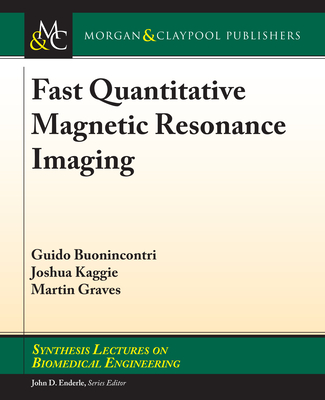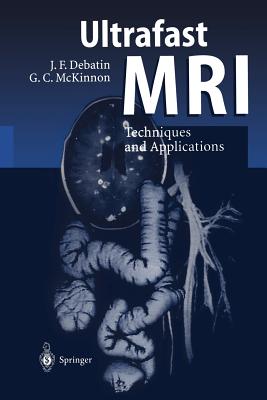Fast Quantitative Magnetic Resonance Imaging
暫譯: 快速定量磁共振成像
Buonincontri, Guido, Kaggie, Joshua, Graves, Martin
- 出版商: Morgan & Claypool
- 出版日期: 2020-02-20
- 售價: $2,250
- 貴賓價: 9.5 折 $2,138
- 語言: 英文
- 頁數: 124
- 裝訂: Quality Paper - also called trade paper
- ISBN: 1681736942
- ISBN-13: 9781681736945
海外代購書籍(需單獨結帳)
商品描述
Among medical imaging modalities, magnetic resonance imaging (MRI) stands out for its excellent soft-tissue contrast, anatomical detail, and high sensitivity for disease detection. However, as proven by the continuous and vast effort to develop new MRI techniques, limitations and open challenges remain. The primary source of contrast in MRI images are the various relaxation parameters associated with the nuclear magnetic resonance (NMR) phenomena upon which MRI is based. Although it is possible to quantify these relaxation parameters (qMRI) they are rarely used in the clinic, and radiological interpretation of images is primarily based upon images that are relaxation time weighted. The clinical adoption of qMRI is mainly limited by the long acquisition times required to quantify each relaxation parameter as well as questions around their accuracy and reliability. More specifically, the main limitations of qMRI methods have been the difficulty in dealing with the high inter-parameter correlations and a high sensitivity to MRI system imperfections.
Recently, new methods for rapid qMRI have been proposed. The multi-parametric models at the heart of these techniques have the main advantage of accounting for the correlations between the parameters of interest as well as system imperfections. This holistic view on the MR signal makes it possible to regress many individual parameters at once, potentially with a higher accuracy. Novel, accurate techniques promise a fast estimation of relevant MRI quantities, including but not limited to longitudinal (T1) and transverse (T2) relaxation times. Among these emerging methods, MR Fingerprinting (MRF), synthetic MR (syMRI or MAGIC), and T1‒T2 Shuffling are making their way into the clinical world at a very fast pace. However, the main underlying assumptions and algorithms used are sometimes different from those found in the conventional MRI literature, and can be elusive at times. In this book, we take the opportunity to study and describe the main assumptions, theoretical background, and methods that are the basis of these emerging techniques.
Quantitative transient state imaging provides an incredible, transformative opportunity for MRI. There is huge potential to further extend the physics, in conjunction with the underlying physiology, toward a better theoretical description of the underlying models, their application, and evaluation to improve the assessment of disease and treatment efficacy.
商品描述(中文翻譯)
在醫學影像技術中,磁共振成像(MRI)因其優秀的軟組織對比度、解剖細節及高靈敏度的疾病檢測而脫穎而出。然而,正如持續且廣泛的努力所證明的,開發新MRI技術的過程中仍然存在限制和挑戰。MRI影像中的主要對比來源是與核磁共振(NMR)現象相關的各種弛豫參數,MRI正是基於這些現象。雖然可以量化這些弛豫參數(qMRI),但在臨床上很少使用,影像的放射學解釋主要基於加權的弛豫時間影像。qMRI在臨床上的採用主要受到量化每個弛豫參數所需的長時間獲取以及其準確性和可靠性問題的限制。更具體地說,qMRI方法的主要限制在於處理高參數間相關性和對MRI系統缺陷的高敏感性方面的困難。
最近,已提出快速qMRI的新方法。這些技術核心的多參數模型具有考慮參數之間相關性及系統缺陷的主要優勢。這種對MR信號的整體觀點使得能夠同時回歸多個個別參數,潛在地提高準確性。新穎且準確的技術承諾能快速估算相關的MRI量,包括但不限於縱向(T1)和橫向(T2)弛豫時間。在這些新興方法中,MR指紋(MR Fingerprinting)、合成MR(syMRI或MAGIC)和T1–T2洗牌技術正以非常快的速度進入臨床世界。然而,所使用的主要假設和算法有時與傳統MRI文獻中的不同,並且有時可能難以捉摸。在本書中,我們將有機會研究和描述這些新興技術的主要假設、理論背景和方法。
定量瞬態狀態成像為MRI提供了令人難以置信的變革性機會。結合基礎生理學,進一步擴展物理學的潛力巨大,旨在更好地理論描述基礎模型、其應用及評估,以改善疾病和治療效果的評估。













